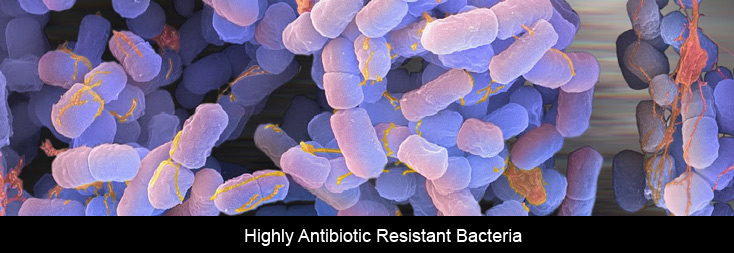What do we need to know about the Highly Antibiotic Resistant Bacteria NDM-1 or New Delhi
Outbreak Of Newly Emerged, Highly Antibiotic Resistant Bacteria In Hospitalised Patients In Gauteng Province
A cluster of patients with colonisation and/or infection with highly-resistant bacteria producing the enzyme NDM-1were recently identified in a Gauteng Province hospital. Most of the patients had underlying conditions that would place them at greater risk of acquiring these organisms and had been hospitalised for an extended period. Two of the patients have died; both had advanced disease due to underlying chronic illness and it is likely that these co-morbidities played a major role in their demise.
NDM-1 is an enzyme that makes bacteria resistant to a broad range of beta-lactamantibiotics. These include the antibiotics of the carbepenem group, which are a mainstay of the treatment of antibiotic-resistant bacterial infections and are usually reserved for severe infections. The beta-lactam group of antibiotics includes such well-known antibiotics as thepenicillins and cephalosporins.
Many bacteria have been shown to produce this NDM-1 enzyme, including strains of Gram-negative gut bacteria (the Enterobacteriaceae, for example Klebsiellapneumoniae andEscherichia coli), as well as other bacteria such as Pseudomonas andAcinetobacterspecies. When these bacteria express the gene for NDM-1, treatment is difficult because the bacteria may be susceptible to only very few antibiotics, for example thepolymixin antibiotic colistin, and tigecycline. The former is a very old antibiotic that is not used frequently and the latter is a relatively new antibiotic related to tetracycline. Both of these are available in South Africa.
The enzyme was named for New Delhi, India, where the bacteria were first identified in 2009, but the exact origin is not known. NDM-1 bacteria have been identified in a number of other countries to date, typically in hospitalised patients. Currently there are very few reported cases worldwide but it is important that they are promptly identified so that the correct treatment can be given. Specific molecular laboratory tests are required to identify these strains, and these tests are available in some laboratories in South Africa.
The National Institute for Communicable Diseases, a division of the National Health Laboratory Service, is setting up a monitoring programme for the public sector as well as a referral diagnostic service. A number of laboratories in the private sector have the capacity for diagnosis, and were responsible for the diagnosis in the current cluster of patients. Not all patients who harbour these bacteria are ill, but some have systemic infections and do require definitive antibiotic treatment.
In response to the outbreak, additional infection control measures to reduce spread of these organisms within the hospital have been instituted. A monitoring programme for patients has been set up to detect any new infections or colonisation, as well as provide specific antibiotic management for systemic infections as required. Infection control measures and prudent antibiotic usage are overall critical factors in reducing the ongoing emergence of antibiotic resistance worldwide.
Article courtesy of ER24 and




